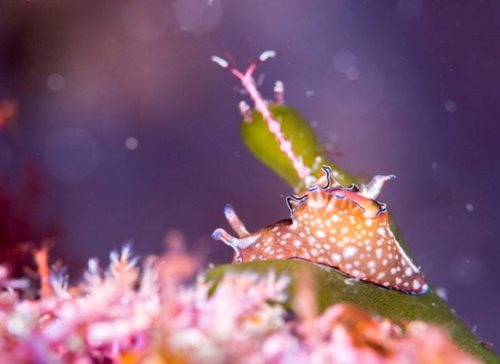 A California sea hare used in the study. Image: divedog/Shutterstock
A California sea hare used in the study. Image: divedog/Shutterstock
Transhumanists prophesy a future where our memories can be uploaded to the cloud and then transferred into a robotic body to live forever.
The reality is, we know so little about the human mind as it is that it is unlikely we’ll find a way to do it any time soon.
But now, a team of researchers from the Society of Neuroscience has revealed in a paper in eNeuro that it has successfully transferred memories between organisms simply by injecting RNA from one into the other.
The typical consensus is that memories are encoded in connections between our brain cells, but neurobiologist David Glanzman is of the opinion that RNA actually holds the key.
‘Very specific kinds of memories’
The breakthrough was achieved with California sea hare snails whereby one was trained to perform a certain action, while another was untrained.
The RNA in the trained snail was used to create an engram – the elusive substrate of memory – by sensitising the snails with tail simulation, which triggers an involuntary defensive reflex.
Once injected into the untrained snails, they too showed a similar defensive response without having ever demonstrated it before.
The trained RNA also increased the excitability of cultured sensory neurons (obtained from untrained animals) that control this reflex. All of this raises the possibility that RNA could be used to modify memory in other organisms, including us.
Speaking of what this means, Glanzman said: “What we are talking about are very specific kinds of memories, not the sort that says what happened to me on my fifth birthday, or who is the president of the US.”
‘This work takes us down an interesting road’
However, speaking with The Guardian, Tomás Ryan, a researcher of memory at Trinity College Dublin, is not exactly convinced that Glanzman and his team have demonstrated an ability to transfer what we consider a personal memory.
“It’s interesting, but I don’t think they’ve transferred a memory,” Ryan said.
“This work tells me that maybe the most basic behavioural responses involve some kind of switch in the animal and there is something in the soup that Glanzman extracts that is hitting that switch.”
He did, however, say that the findings show optimism for a field where thinking outside the box is not actively encouraged.
“In a field like this, which is so full of dogma, where we are waiting for people to retire so we can move on, we need as many new ideas as possible,” he said.
“This work takes us down an interesting road, but I have a huge amount of scepticism about it.”
Colm Gorey
This article originally appeared on www.siliconrepublic.com and can be found at:
https://www.siliconrepublic.com/innovation/transfer-memories-possible-rna



